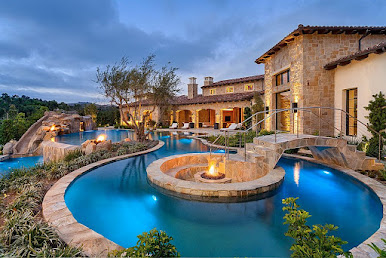Ensuring Pool Safety: Compliances, Inspections, and Barrier Regulations
Introduction:
Owning a home with a pool is a delightful luxury, offering endless opportunities for relaxation and recreation. However, along with the joys of pool ownership come significant responsibilities, particularly concerning safety. In Victoria, Australia, stringent regulations govern pool safety compliances to mitigate the risk of accidents and drowning incidents. In this comprehensive guide, we will delve into the essential aspects of pool safety compliances, the importance of regular pool inspections, and the specific regulations surrounding pool barriers in Victoria.
Understanding Pool Safety Compliances
Pool safety compliances encompass a set of regulations and standards designed to ensure the safe operation and maintenance of residential pools. These compliances are enforced by local authorities and aim to reduce the risk of drowning and other accidents associated with pool usage. Adhering to pool safety compliances is not only a legal requirement but also a moral obligation for homeowners to safeguard the well-being of their families and guests.
Key components of pool safety compliances include:
1. Pool Barrier Requirements: Proper installation and maintenance of pool barriers are crucial to prevent unauthorized access, especially by children. Barriers must meet specific height, design, and construction standards outlined in local regulations.
2. Gate and Door Mechanisms: Gates and doors within the pool barrier must be equipped with self-closing and self-latching mechanisms to ensure they remain securely closed at all times, minimizing the risk of accidental entry.
3. Water Quality and Filtration: Regular testing and maintenance of water quality are essential to prevent the growth of harmful bacteria and algae. Proper filtration systems must be in place to ensure water clarity and sanitation.
4. Safety Equipment: Adequate provision of safety equipment such as lifebuoys, life jackets, and first aid kits is imperative to respond effectively in case of emergencies.
5. Signage: Clear and visible signage indicating pool rules, depth markers, and emergency contact information must be displayed around the pool area to inform users and promote safety awareness.
The Importance of Pool Inspections
Regular pool inspections play a pivotal role in verifying compliance with safety standards and identifying any potential hazards or deficiencies. In Victoria, pool inspections are typically conducted by qualified inspectors accredited by the local council or relevant regulatory body. These inspections involve a comprehensive assessment of various aspects of the pool and its surroundings to ensure adherence to regulatory requirements.
During a pool inspection, inspectors may evaluate the following:
1. Pool Barrier Compliance: Inspectors assess the height, design, and integrity of the pool barrier, including gates, fences, walls, and enclosures, to verify compliance with relevant regulations.
2. Gate and Door Mechanisms: The functionality of self-closing and self-latching mechanisms on gates and doors is tested to ensure they operate effectively and securely.
3. CPR Signage: Presence of CPR signage with clear instructions on resuscitation techniques and emergency procedures is checked to promote timely response to emergencies.
4. Water Quality and Filtration: Inspectors may conduct water quality tests to assess the pH level, chlorine concentration, and clarity of the pool water. They also inspect filtration systems to ensure proper operation and maintenance.
5. Surrounding Environment: The overall safety of the pool surroundings, including landscaping, lighting, and accessibility, is evaluated to identify any potential hazards or obstructions.
Victoria Pool Fence Regulations
In Victoria, specific regulations govern the construction and maintenance of pool barriers to enhance safety and prevent drowning incidents. These regulations are outlined in the Building Regulations 2018 and are enforced by the Victorian Building Authority (VBA) and local councils.
Key requirements of Victoria pool fence regulations include:
1. Height: Pool barriers must have a minimum height of 1.2 meters (approximately 4 feet) measured from finished ground level. This height helps prevent young children from climbing over the barrier and accessing the pool unsupervised.
2. Design and Construction: Pool barriers must be constructed using durable materials such as steel, aluminum, or glass to ensure structural integrity and longevity. The design should incorporate vertical bars or panels with no gaps exceeding 100 millimeters (approximately 4 inches) to prevent children from squeezing through.
3. Gates and Latches: Gates within the pool barrier must be self-closing and self-latching to ensure they remain securely closed at all times. The latch mechanism must be located at least 1.5 meters (approximately 5 feet) above ground level to prevent easy access by children.
4. Non-Climbable Zone: A non-climbable zone extending 900 millimeters (approximately 3 feet) outward from the pool barrier must be maintained to prevent climbing hazards. This zone should be free of any objects or structures that could facilitate climbing, such as trees, shrubs, or furniture.
5. Certification and Compliance: All pool barrier safety s must comply with the relevant Australian Standards, specifically AS 1926.1-2012 "Swimming Pool Safety - Safety Barriers for Swimming Pools." Upon completion of construction or installation, a compliance certificate must be obtained from a registered building surveyor or inspector to certify that the pool barrier meets regulatory requirements.
By adhering to pool safety compliances, undergoing regular pool inspections, and ensuring compliance with Victoria's pool fence regulations, homeowners can create a safe and secure environment for enjoying their pool while minimizing the risk of accidents and injuries. Remember, pool safety is not just a legal obligation but a moral responsibility to protect lives and promote water safety awareness in the community.




Comments
Post a Comment